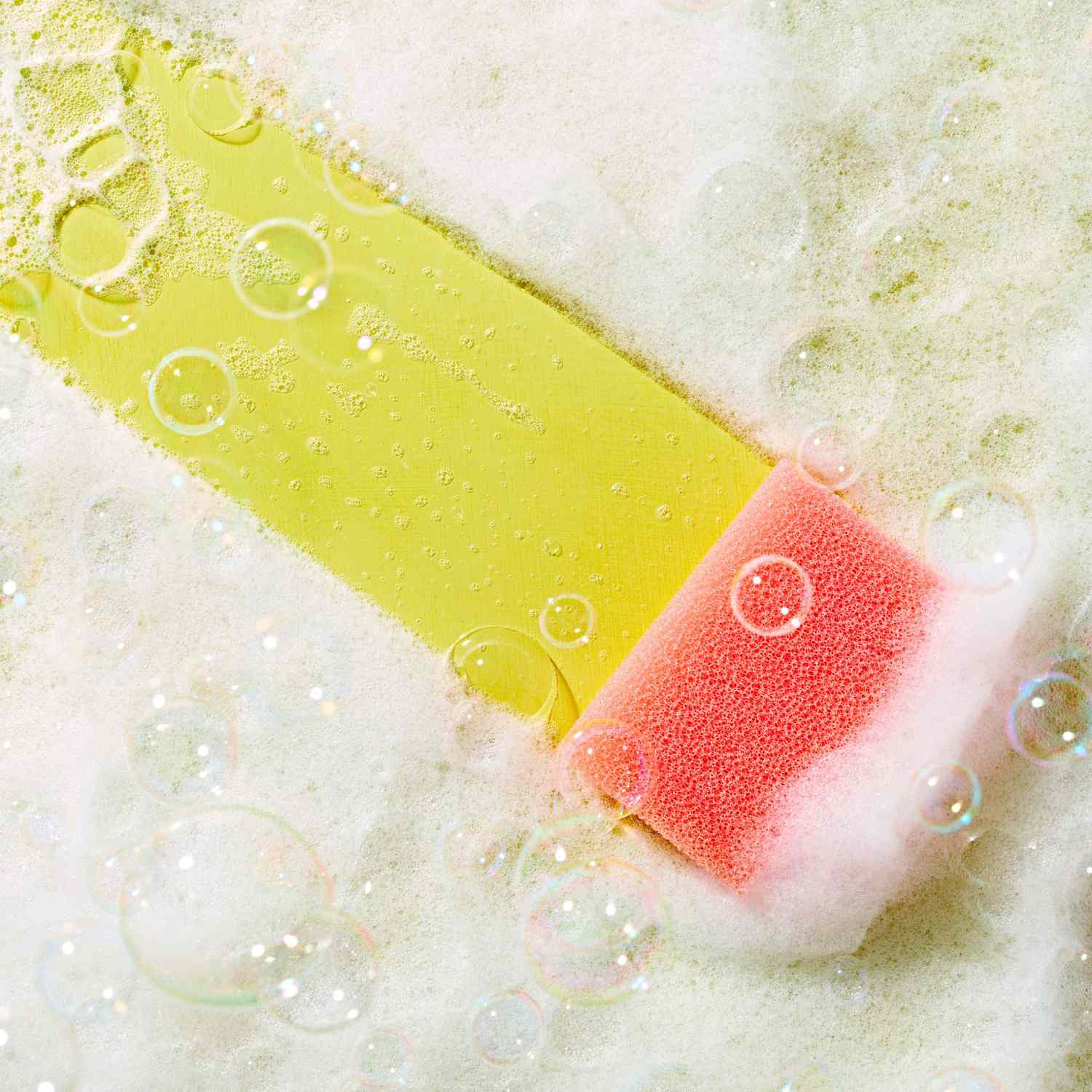Brush up on the powers—and limitations—of your cleaning staples.
Vinegar
Does: Sanitize.
Yeah, the stuff you use for salad dressing is also great at slashing bacteria. “You can go a long way toward reducing organisms by rubbing a surface with distilled white vinegar and water,” says a clinical professor of microbiology and pathology.
Doesn’t: Disinfect.
To disinfect, an ingredient must kill nearly all the microbes on a surface, which vinegar does not do. It’s strongest (and, unfortunately, smelliest) in its undiluted form, says a microbiologist. The more water you add, the less effective it becomes.
Good to know:
You
can use a vinegar-and-water solution on some kitchen and bathroom
countertops, on glass, and in the washing machine, but avoid using it on
marble, granite, stone, and wood, because the acidity can damage the
surface. To lift stuck-on grime, add baking soda to your vinegar solution and watch it bubble up.
Essential Oils
Do: Make DIY cleaners smell great.
“Essential oils help vinegar-based cleaning solutions become a bit more pleasant, especially if you’re new to green cleaning,” says a cleaning expert. Choose oils labeled “100 percent pure”, she adds, to make sure they don’t contain unnecessary additives.
Don’t: Always sanitize or disinfect. Studies have shown that clove and cinnamon essential oils may possess antibacterial properties, but they’re not powerful enough to be the only sanitizing agent in DIY cleaning solutions. If you’re looking for an essential-oil-based product that can serve as a natural disinfectant (and not just a sanitizer), go for one with thyme oil as the active ingredient, Tierno suggests.
Good to know:
If
you want to keep your cleaning routine completely au naturel, remove
the very top layer (avoiding the pith) from an orange or lemon with a
vegetable peeler. Add it to your spray bottle of vinegar water for a
pleasant aroma.
Chlorine Bleach
Does: Disinfect.
No DIY solution disinfects quite as well as bleach, and even some experts who clean mostly green have it on hand. “Under my sink right now, you’ll find baking soda, vinegar, dish soap, and a bottle of bleach,” says an expert. To properly disinfect surfaces after you or a housemate gets sick, use one-third cup of bleach per gallon of water. To disinfect after handling raw meat, use one tablespoon of bleach per gallon of water.
Doesn’t: Immediately result in environmental catastrophe—at least with careful, every-once-in-a-while household use. Bleach can be harmful in high concentrations, but a bit of bleach diluted with water going down your drain is acceptable.
Good to know:
Nonchlorine
bleach is gentler than chlorine bleach (it uses hydrogen peroxide to
lift stains from clothing). However, there are no nonchlorine bleach
products registered as disinfectants with the environmentalists.
Steam
Does: Sanitize without the use of chemicals.
Superheated vapor is the ultimate green cleaner because it’s just water, says Donna Smallin Kuper, a certified housecleaning technician. It can significantly reduce bacteria (the high temps essentially incinerate them), and the hot moisture loosens embedded dirt and grime, letting you use less elbow grease.
Doesn’t: Work everywhere.
On painted surfaces, like walls and furniture, steam can cause peeling. On certain other surfaces, like brick, marble, and wood, it can lead to buckling or warping.
Good to know:
You
can sanitize floor tiles with a steam mop. Allergy sufferers may benefit from steam cleaning, as the process helps kill dust mites.
Microfiber Cloths
Do: Clean better than paper towels or cotton rags.
As the name implies, microfiber cloths are made up of teeny-tiny synthetic fibers, each of which helps pick up more debris than that wad of paper towels. They can also leave windows streak-free, whereas cotton rags may deposit lint.
Don’t: Biodegrade.
When you wash them, they can shed microscopic strands of plastic that end up in our waterways. Consider installing a Filtrol in your washing machine to catch those fibers and minimize pollution from all your laundry.
Good to know:
Cotton cleaning cloths and cellulose-cotton Swedish dishcloths are sustainable and biodegradable (when they eventually wear out).
Disposable Wipes
Do: Disinfect when you’re in a pinch.
(We agree: Keeping a tub of these in your car is incredibly convenient.)
Don’t: Decompose.
Most cleaning wipes are not bio-degradable and can clog up sewer systems. In 2017, an 820-foot-long “fatberg,” or huge mass of solid waste containing sanitary products (like wipes) and cooking grease, was discovered in a London sewer.
Good to know:
A reusable cloth without disinfectant is a fine option for routine cleaning, according to the environmentalist.
Triclosan
Does: Kill microbes.
For decades, it’s been a popular additive to products like soap and toothpaste.
Doesn’t: Keep you safe from all dangerous strains of bacteria.
A few studies have suggested that when exposed to triclosan, bacteria can become resistant to antibiotics. Triclosan was banned by the FDA, but only from certain soaps.
Good to know:
The
FDA requires manufacturers to list ingredients. Companies like Procter
& Gamble and SC Johnson post ingredients online. Rapinchuk suggests
also researching items on third-party sites (such as ewg.org)
or apps (Think Dirty, Shop Clean). Products with the Green Seal,
Greenguard, or EPA’s SaferChoice logo have been certified safer for
people and the planet.
Waste Less
In addition to cutting back on wipes, focus on the number of packaged cleaners you own and what you can live without or DIY instead. Consider using up what you have, even if it’s not a product you’d purchase again, then thoroughly clean spray bottles and fill them with your homemade solutions, suggests cleaning expert Melissa Maker. If you want to immediately get rid of the packaged goods, ask a friend or neighbor if they would like to finish them. Recycle whatever you can—check with your local recycling program on how to handle different types of plastics or aerosols.

